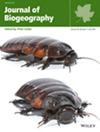Revealing genetic patterns across ecoregions in the northeastern Pacific of California and Baja California
Abstract
Aim
We reconstructed the genetic patterns and identified the main genetic breaks of several taxa across California and Baja California coast. Additionally, we evaluated the contribution of different variables to the level of structure.
Location
California and Baja California coast.
Taxon
Fish, invertebrates, algae, seagrass and mammals.
Methods
We generated a map to reconstruct the genetic patterns using genetic information (Fst index and phylogenetic clades distribution) from a literature review of population genetics publications from 2000 to 2023. For the analysis of genetic connectivity drivers, we explored the effect of different variables representing life history traits, reproductive strategies and biogeographic variables and generated five working hypotheses which were evaluated with generalized linear models (GLMs).
Results
We identified 42 genetic breaks from 63 species across our study area. The largest number of breaks occurs from 27° N to 29° N and from 31° N to 35° N. This range includes transition zones between ecoregions such as Punta Eugenia, Baja California, Mexico and Point Conception, California, USA. We also identified Ensenada, Baja California region as a barrier to gene flow. From a transboundary perspective, we found 40 species with connectivity between California and Baja California, including 14 commercial and or recreational species. We found none of the variables explored had a clear effect on the level of genetic differentiation of the species assessed in the region.
Main Conclusion
Genetic breaks among different taxa do not distribute randomly across the latitudinal range from California and Baja California coastal area, rather they are mainly located in transition zones between marine ecoregions. The challenge to identify specific variables that explain general genetic patterns highlights the complexity that drives population connectivity processes in marine species.

 求助内容:
求助内容: 应助结果提醒方式:
应助结果提醒方式:


